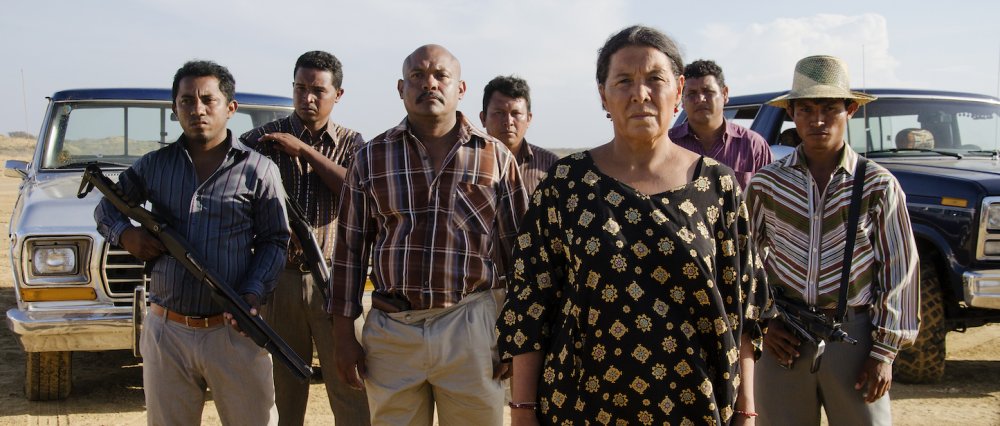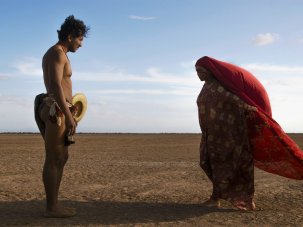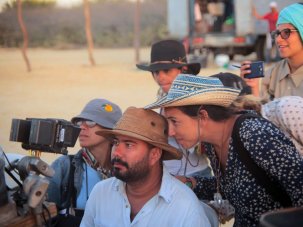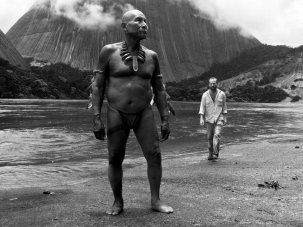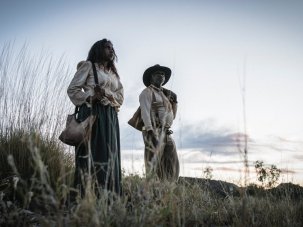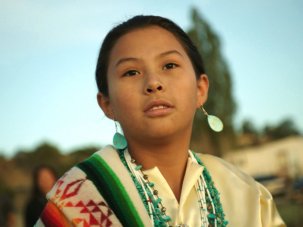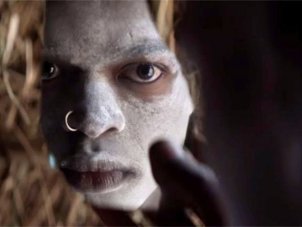In Ciro Guerra and Cristina Gallego’s Birds of Passage, the visual signifiers of superstition are ever-present. Talismans, decorative necklaces, mourning veils and traditional song all permeate the film, as augurs of the tribal clan war that descends on the characters. The result is a textured and utterly unique re-imagining of the family crime saga.
Colombia/Denmark 2018
125 mins
Directors Ciro Guerra, Cristina Gallego
Cast
Carmiña Martínez
Jhon Narváez
José Acosta
José Vicente Cotes
Juan Martínez
Natalia Reyes
► Trailer
Set in northern Colombia in the years between 1968 and 1980, Guerra and Gallego’s film is focused on the Wayuu, a large indigenous group who operate by their own strict codes of family honour and ritual courtship. Rapayet (Jose Acosta) is an ambitious young man with one foot in his cloistered indigenous community and another in the rapidly changing contemporary Colombia, where the burgeoning marijuana market is a means to quick cash.
Seeking marriage into a respected Wayuu family, Rapayet is united with a woman called Zaida. There is no mistaking who’s in charge of the family: Zaida’s formidable mother and matriarch of the clan, Ursula. Played with steely resolve by Carmina Martinez, Ursula is a respected ‘word messenger’ who reads dreams and sees omens everywhere, but her beliefs are girded by a fierce pragmatism – and she becomes increasingly complicit in her son-in-law’s business dealings. The wealth that leaks into the once humble clan allows them many beautiful things. The most striking of which is a large modernist home in the parched desert.
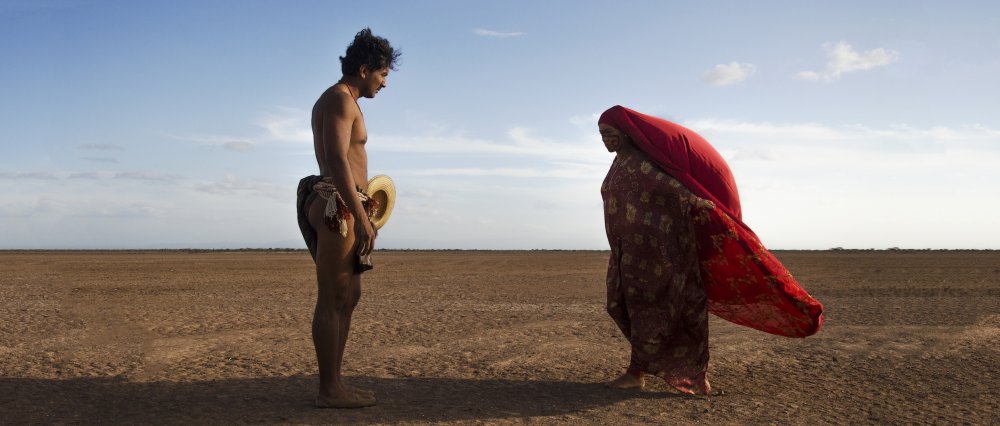
The film spends much of its time detailing the cultural ecosystem of the clan lifestyle, and offsetting it with the increasingly materialistic world outside. As with so many marginal groups, the Wayuu have a word for outsiders: ‘alijunas’, who prove instructive in how not to behave. To revel in material goods or fail to pay proper attention to ancient customs is to behave like alijunas – an accusation that could be levelled at many of the characters in Birds of Passage.
The film vividly depicts those increasing tensions and contrasts, as when Ursula unwraps an ancient family talisman with a sizeable gold Rolex on her wrist. Elsewhere in the film, the imagery is equally striking. There is a frenetic courtship dance where the woman is dressed in ceremonial blood red shroud; a phalanx of pick-up trucks armed with machine guns, laying a house to waste; three dark-haired generations of Wayuu women, barefoot in richly patterned gowns, stark against the backdrop of a white palatial bedroom. There is a dedicated ethnography to Guerra and Gallego’s work here, but it is nonetheless also a depiction of a guns-blazing criminal empire.
The film is built around a five-act structure, each accompanied by song and labelled as such (Wild Grass, The Graves, Prosperity, The War and Limbo). Exploring the sometimes invisible and sometimes direct transgressions of this particular Wayuu family, Birds of Passage offers a lesson about the destabilisation of traditional modes of life and a fascinating glimpse into a little-understood community. That the filmmakers wrap it into familiar genre territory makes it all the more impressive.
-
The Digital Edition and Archive quick link
Log in here to your digital edition and archive subscription, take a look at the packages on offer and buy a subscription.




